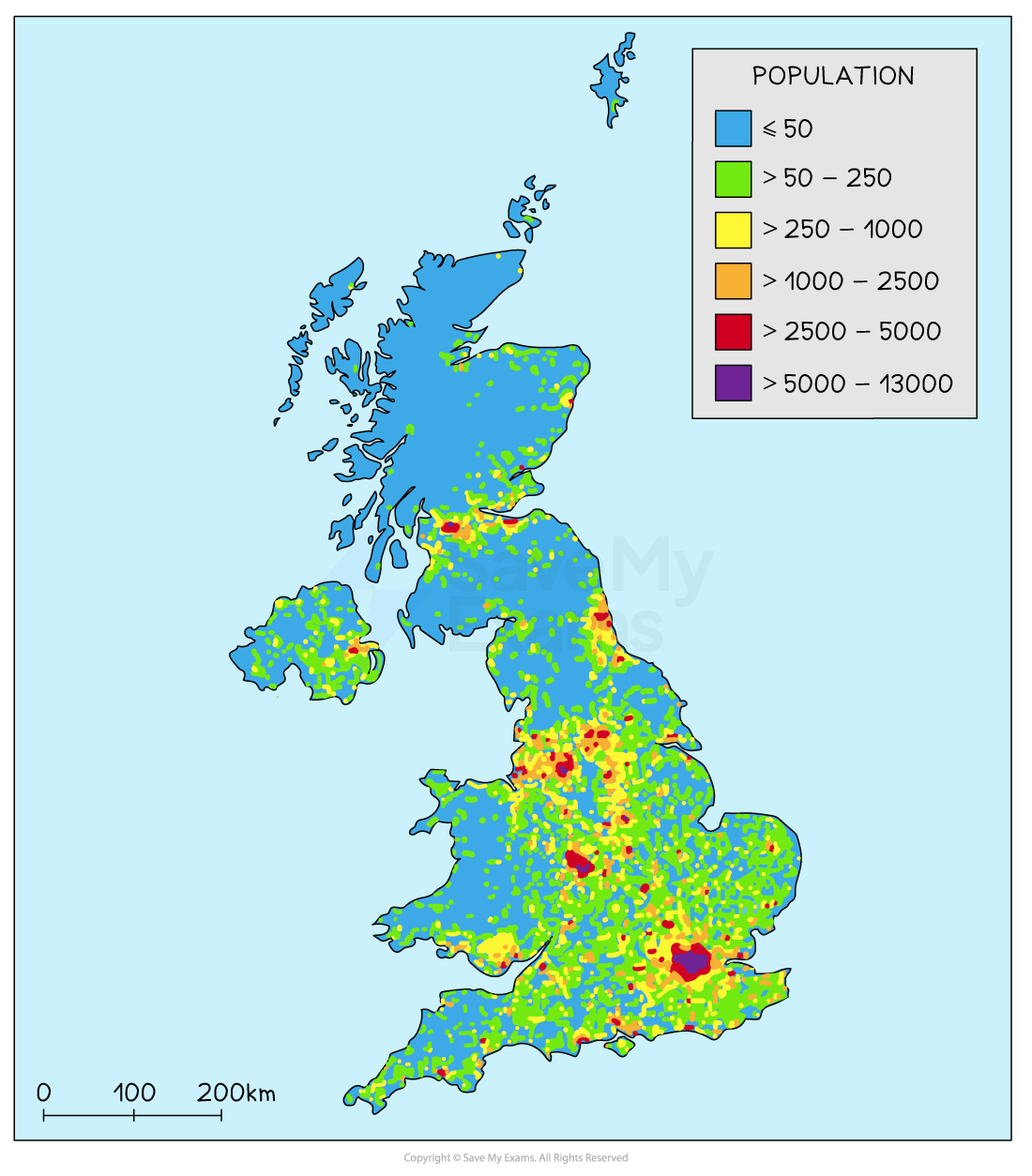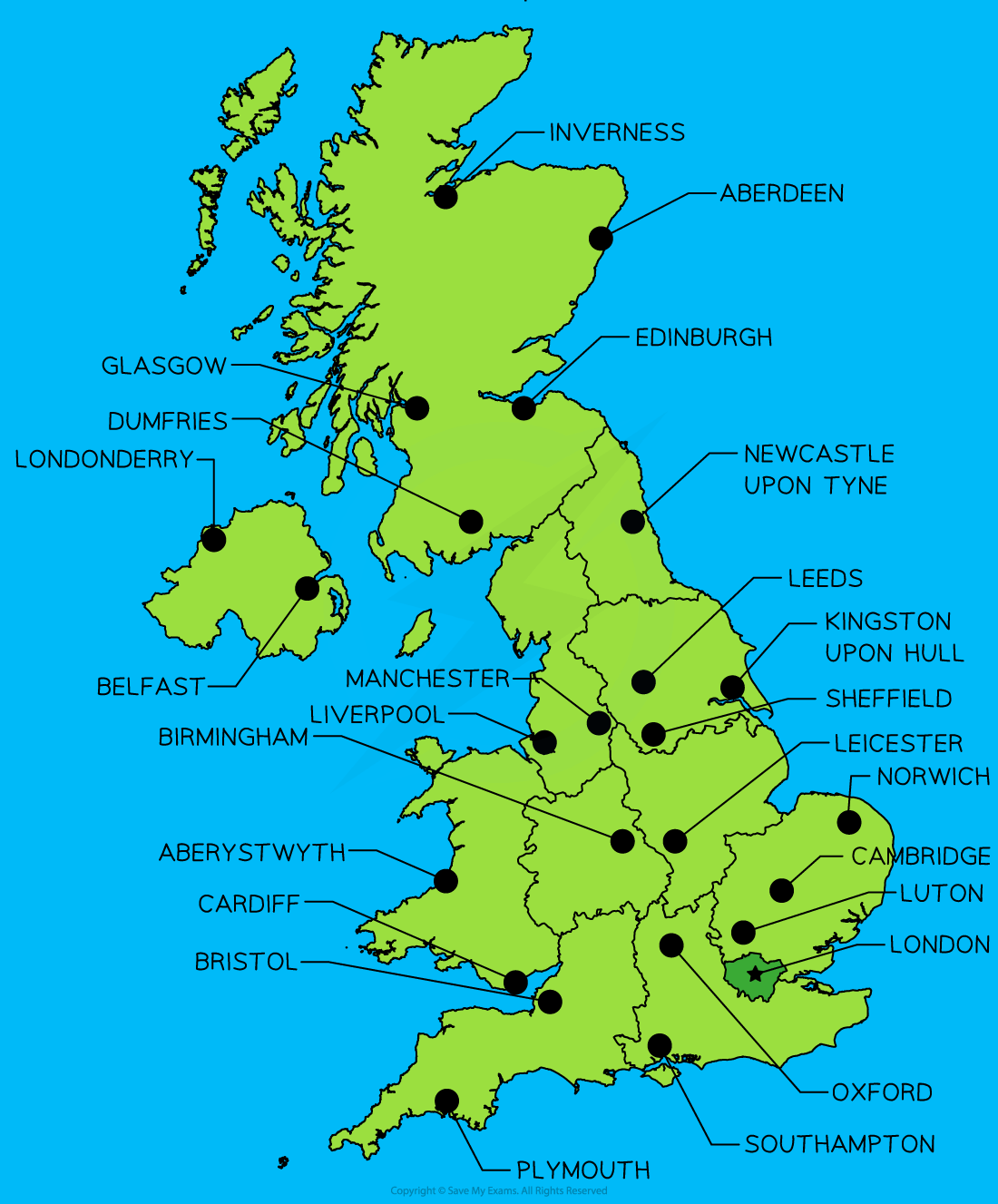Urbanisation in the UK (Edexcel GCSE Geography A): Revision Note
Exam code: 1GA0
Urban Populations in the UK
The distribution of the UK population is uneven
The average population density is 281 people per km2
In urban areas, such as London, Brighton and Luton, this increases to over 5000 people per km2
In most rural areas, it decreases to fewer than 50 people per km2

The most populous region is the south-east of England, with cities such as London, Birmingham and Manchester and areas with attractions, employment and entertainment
The lowest density is found in Northern Scotland due to its mountainous landscape and unpredictable climate
Much of the rest of the UK has a higher density population due to its gentle hills, moderate climate and excellent transport links

Varying Rates of Urbanisation in the UK
The fastest-growing cities are in the southeast of England, where many cities have developed into conurbations
This is also the region with the fastest-growing economy at present
London is not only the capital but also the UK’s biggest city, with 9.5 million people and a global financial centre
Birmingham is the second-largest city, with a population of 1.1 million
Population distribution is affected by relief
It is harder to develop on mountainous terrain than lowland areas such as Birmingham, London and Cardiff
Certain coastal areas have a higher population density distribution, particularly where estuaries are sheltered, allowing key ports and harbours to be built
Fishing ports of Grimsby, Whitby (England) and Portavogie in Northern Ireland
Liverpool, Bristol, and Southampton as key trade ports

Factors Affecting Population Densities
Factor | Density | Example |
|---|---|---|
Favourable/moderate climate | High | South England |
Opportunities for employment | Very high | Major cites |
Remote and poor communications | Low | Mid Wales, Northern England, parts of Ireland and Scotland |
Fertile and suitable land for agriculture | High | East Anglia and southern England |
Mountainous and inaccessible | Low | Wales, Scotland and England |
Poor soil quality | Low | Uplands of the north and west of England |
Availability of raw materials | High | Sand and clay are widely available |
Reliable supply of water | Very high | Wales |
Flat land | Very high | Lincolnshire |
Availability of ports | Very high | Liverpool |
Centres of specialisation | Very high | London, Birmingham, etc. |
Transport links | High | Manchester, Cardiff, etc. |

Unlock more, it's free!
Did this page help you?